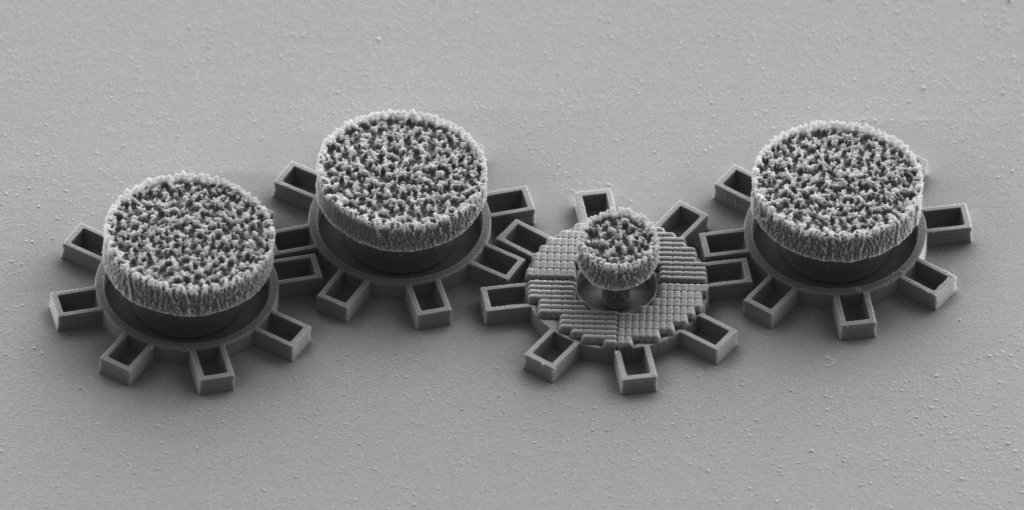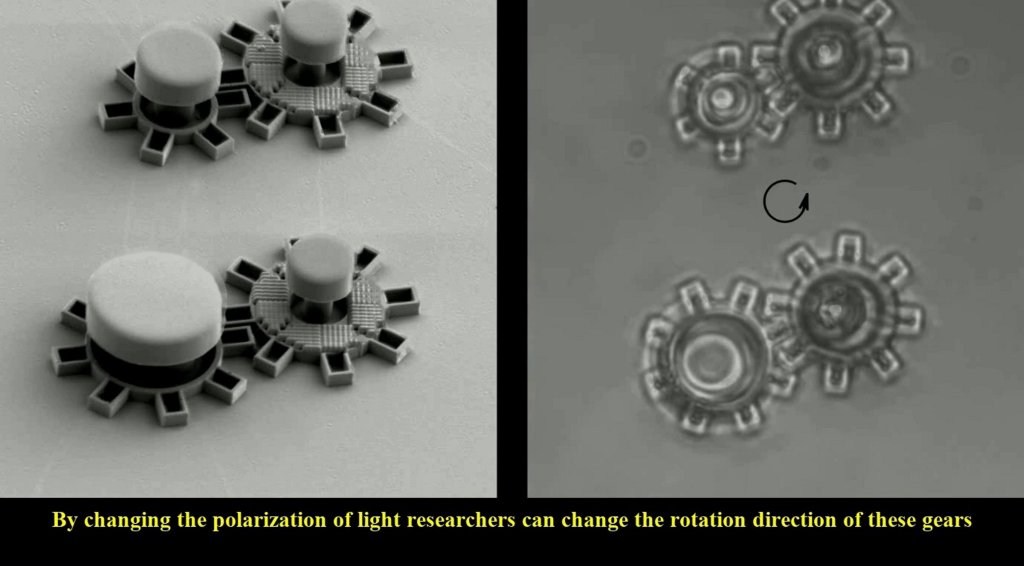This article was originally written by Dean Murray for SWNS — the U.K.’s largest independent news agency, providing globally relevant original, verified, and engaging content to the world’s leading media outlets.
For more than three decades, researchers have been attempting to create gears that are small enough to fit inside the human body, but with the current available tech, they’ve hit a wall at 0.1 millimeters in diameter. Now, however, a team at Sweden’s University of Gothenburg has built gears that are so tiny, they can fit inside a strand of hair, laying the groundwork for the smallest on-chip motors in history — and they’re powered by light.

Publishing their results in Nature Communications, the team created gears that each measure about 0.016 millimeters in diameter. A key aspect of their methodology was replacing traditional mechanical drive trains, which transmit power from a source to a machine, with laser light, which is easier to control and doesn’t require direct contact with the device.
The gears are as small as some human cells, meaning they could one day be used in medicine, the scientists say. “We can use the new micromotors as pumps inside the human body, for example to regulate various flows,” first author Gan Wang explained in a press release. “I am also looking at how they function as valves that open and close.”
Wang, G., Rey, M., Ciarlo, A. et al. / Nature Communications
Wang and his colleagues made the new devices with optical metamaterials: small, patterned structures that capture and control light on a nanoscale. Using traditional lithography, they constructed silicon gears with the metamaterial directly on the microchips. Then, to make the gears spin, they shined a laser light on the metamaterial. The intensity of the light dictates the speed, while the polarization of the light alters the gear wheel’s direction.
Wang, G., Rey, M., Ciarlo, A. et al. / Nature Communications
“We have built a gear train in which a light-driven gear sets the entire chain in motion. The gears can also convert rotation into linear motion, perform periodic movements, and control microscopic mirrors to deflect light,” Wang said, adding, “This is a fundamentally new way of thinking about mechanics on a microscale. By replacing bulky couplings with light, we can finally overcome the size barrier.”
And in addition to potential medical applications, the possibilities researchers are now imagining extend far beyond mechanical drivers: micro- and nanomachines that can control light, manipulate small particles, or be integrated into future lab-on-a-chip systems.

“By using light as a widely available and biocompatible energy source, these micromotors are well-suited for manipulating biological matter, including bacteria and cells,” the authors wrote in the study, adding, “This non-toxic, indirect energy delivery mechanism broadens the applications of our light-driven micromotors and metamachines in biomedical environments.”
RELATED: “Hungry” Fat Cells Could Fight Cancer by Devouring Tumors’ Food Sources, Study Suggests












